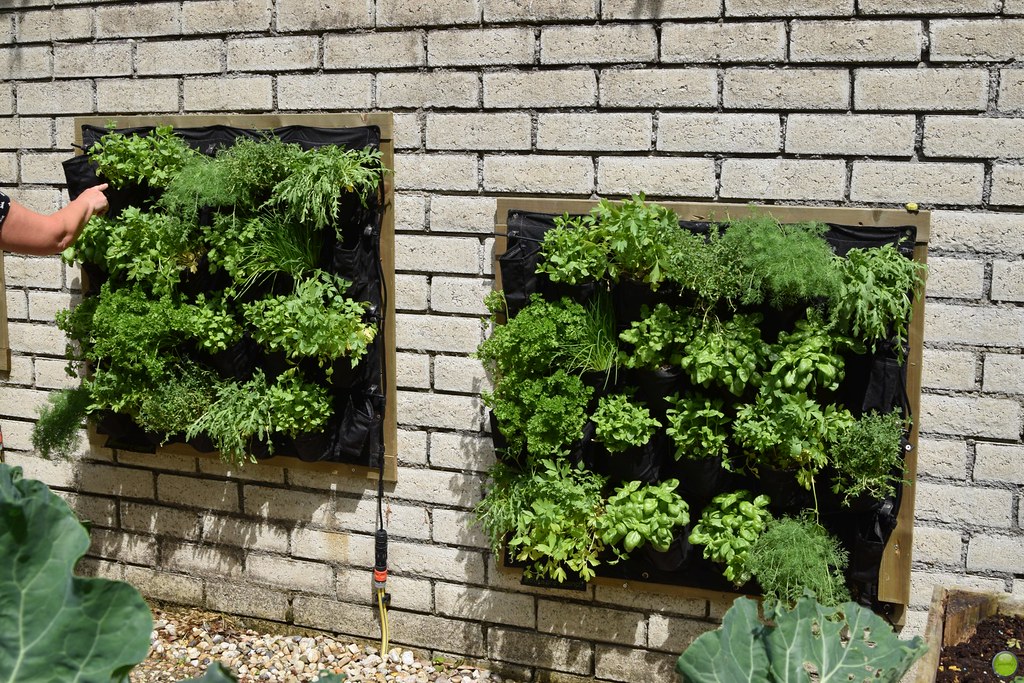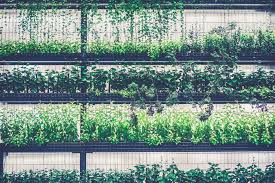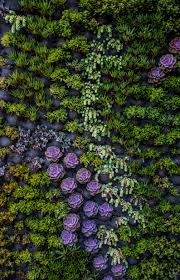Vertical Garden Systems
Explore different vertical gardening approaches tailored to your space, budget, and gardening experience level.

Tower Gardens
Perfect for beginners, tower systems use stacked planters to create impressive vertical displays. Ideal for herbs, strawberries, and compact vegetables.
Best for: Patios, balconies, small yards
Space needed: 2x2 feet footprint
Investment: $50-200

Wall-Mounted Systems
Transform any wall into a living masterpiece with modular pocket systems or trellis installations. Maximize space efficiency while creating stunning visual impact.
Best for: Apartments, urban homes, commercial spaces
Space needed: Any vertical wall surface
Investment: $75-500

Hydroponic Towers
Soil-free growing systems that deliver nutrients directly to plant roots. Faster growth, higher yields, and precise control over growing conditions.
Best for: Tech enthusiasts, maximizing production
Space needed: 3x3 feet with electrical access
Investment: $200-800

Living Walls
Large-scale installations that turn entire walls into green spaces. Perfect for creating dramatic focal points and improving air quality in larger areas.
Best for: Offices, restaurants, feature walls
Space needed: 6+ feet of wall space
Investment: $300-2000+
🔍 Interactive System Comparison Tool
Click here to discover which vertical garden system matches your space and goals!
Best Plants for Vertical Growing
Not all plants thrive in vertical systems. Choose varieties that adapt well to container growing and vertical constraints.
🌿 Leafy Greens
Lettuce, spinach, kale, arugula
Growth time: 30-45 days
Difficulty: Easy
Shallow roots make them perfect for vertical systems. Harvest outer leaves for continuous production.
🌱 Herbs
Basil, cilantro, parsley, oregano, thyme
Growth time: 40-60 days
Difficulty: Easy
High value crops that thrive in containers. Pinch flowers to keep leaves tender and flavorful.
🍓 Strawberries
Ever-bearing and day-neutral varieties
Growth time: 60-90 days to fruit
Difficulty: Moderate
Trailing varieties work beautifully in tower systems. Provide adequate nutrition for best fruit production.
🥒 Compact Vegetables
Cherry tomatoes, peppers, cucumbers
Growth time: 70-90 days
Difficulty: Advanced
Choose dwarf varieties. Require strong support structures and consistent feeding.
🌸 Flowering Plants
Petunias, marigolds, nasturtiums
Growth time: 45-60 days to bloom
Difficulty: Easy
Add color and attract beneficial insects. Many are edible and add beauty to edible gardens.
🍃 Trailing Plants
Sweet potato vine, ivy, trailing succulents
Growth time: Ongoing
Difficulty: Easy
Perfect for covering structures and creating lush appearances. Many are low-maintenance options.
🌱 Plant Selection Quiz
What's your experience level?
Beginner: Start with leafy greens and herbs - they're forgiving and provide quick results.
Intermediate: Add strawberries and flowering plants for variety and visual appeal.
Advanced: Challenge yourself with compact vegetables and create a complete vertical ecosystem.
Why Choose Vertical Gardening?
Vertical gardening offers unique advantages that make it perfect for modern urban living and sustainable food production.
Space Efficiency
Grow 3-4 times more plants in the same footprint. Perfect for apartments, condos, and small yards where horizontal space is limited.
Water Conservation
Drip irrigation and recirculating systems use 70% less water than traditional gardens. Every drop counts in sustainable growing.
Climate Control
Better air circulation reduces pest and disease issues. Easier to protect plants from extreme weather conditions.
Higher Yields
Optimized growing conditions and intensive planting can double or triple production compared to traditional gardens.
Easy Maintenance
Everything at eye level means less bending, easier harvesting, and better monitoring of plant health and growth.
Aesthetic Appeal
Transform blank walls into living art. Vertical gardens create stunning focal points and improve property values.
Year-Round Growing
Indoor vertical systems enable fresh produce production regardless of season or climate conditions.
Accessibility
Adjustable heights make gardening accessible for people with mobility challenges or physical limitations.
🏃 Easy Maintenance
Everything at eye level means less bending, easier harvesting, and better monitoring of plant health and growth.
🎨 Aesthetic Appeal
Transform blank walls into living art. Vertical gardens create stunning focal points and improve property values.
🌱 Year-Round Growing
Indoor vertical systems enable fresh produce production regardless of season or climate conditions.
♿ Accessibility
Adjustable heights make gardening accessible for people with mobility challenges or physical limitations.
Vertical Garden Maintenance
Success with vertical gardening comes from understanding the unique care requirements. Follow this comprehensive maintenance schedule.
Daily Care (5-10 minutes)
Check Water Levels
Vertical systems dry out faster than ground gardens. Check soil moisture daily, especially during hot weather. Top containers dry fastest.
Visual Inspection
Look for signs of stress, pests, or disease. Early detection prevents problems from spreading throughout your vertical system.
Quick Harvesting
Pick ripe fruits and vegetables, deadhead flowers, and remove any yellowing leaves to keep plants productive and healthy.
Weekly Tasks (30-45 minutes)
Fertilizer Application
Container plants need regular feeding. Use liquid fertilizer weekly or slow-release pellets monthly. Hydroponic systems need nutrient solution changes.
Pruning & Training
Guide plant growth, remove suckers from tomatoes, train vining plants up supports, and maintain shape of your vertical garden.
System Check
Inspect irrigation lines, check for clogs, ensure pumps are working, and verify structural integrity of your vertical system.
Monthly Deep Care (1-2 hours)
Soil Refresh
Add fresh compost to top layers, replace depleted soil in containers, and ensure proper drainage throughout the system.
Plant Rotation
Replace finished crops with new seedlings, rotate plant families to prevent soil depletion, and plan seasonal transitions.
Deep Cleaning
Clean hydroponic reservoirs, disinfect growing containers, remove plant debris, and maintain overall system hygiene.
Getting Started Guide
Step 1: Assess Your Space
Measure available area, check sunlight exposure (6+ hours for vegetables, 4+ for herbs), ensure access to water and electricity if needed.
Key considerations: Wind exposure, weight limits, and drainage options.
Step 2: Choose Your System
Start small with a basic tower or wall system. You can always expand later as you gain experience and confidence.
Budget tip: DIY systems using recycled materials can cost under $30.
Step 3: Select Plants
Begin with easy-growing herbs and leafy greens. These provide quick results and build your confidence for more challenging crops.
Success tip: Plant varieties with similar water and light needs together.
Step 4: Set Up & Monitor
Install your system, plant your selections, and establish a daily monitoring routine. Keep a garden journal to track what works.
Growth tip: Take photos weekly to monitor progress and identify issues early.